Share This Article
Learn more
Google Pixel 8 Pro vs OnePlus 12: OVERVIEW
Last update on 2025-05-16 / Affiliate links / Images from Amazon.
Google Pixel 8 Pro
Google debuted the Pixel 8 Pro with gusto, showcasing a smartphone that is excellent without requiring the highest level of performance. A tonne of features strive to establish the standard for the market, even though it costs more than others.
For
Against
OnePlus 12
Nearly everything a flagship phone in 2024 might ask for is included in the OnePlus 12. It has an amazing camera system, an extended battery life, and an absolutely gorgeous display. On the other hand, you should consider something else if you’re searching for AI improvements.
For
Against
These days, it might be challenging to select between the many fantastic smartphones available. The comparison between the Google Pixel 8 Pro vs OnePlus 12 demonstrates this. Even while these two phones share certain similarities, Google and OnePlus each add a little “flair” to make their phones stand out from the competition.
- Pixel 8 Pro is the all-pro phone engineered by Google; it’s super fast, powerful, and secure,...
- Unlocked Android 5G phone gives you the flexibility to change carriers and choose your own data...
- With the most refined design yet, Pixel 8 Pro has an immersive, 6.7-inch Super Actua display...
Last update on 2025-05-16 / Affiliate links / Images from Amazon.
Google Pixel 8 Pro vs OnePlus 12: SPECS
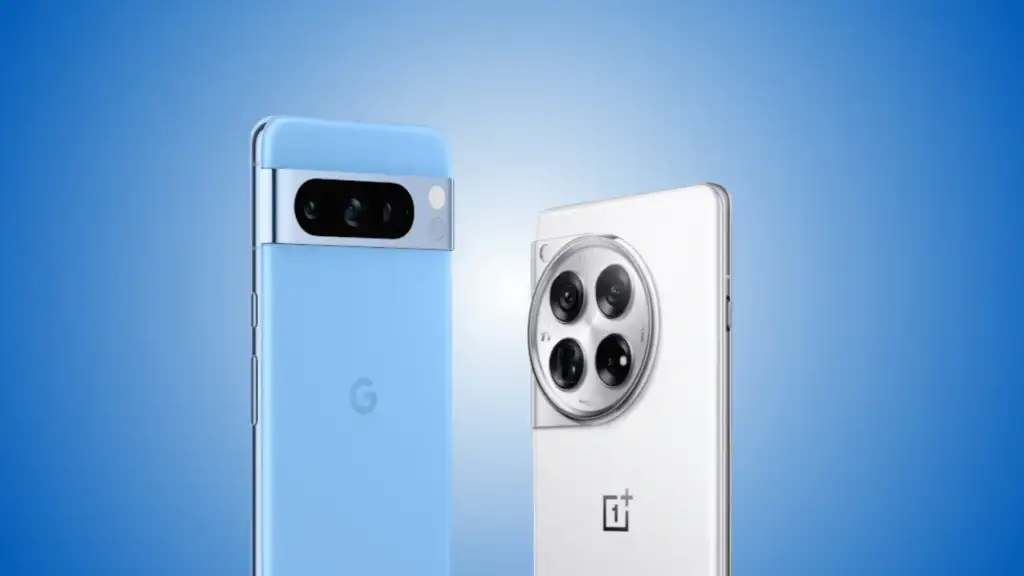
Google Pixel 8 Pro Key Specs
OnePlus 12 Key Specs
Let’s read on in the following parts to get a better understanding of how the Google Pixel 8 Pro vs OnePlus 12 compare, and maybe you’ll have enough arguments to determine which one is best for you.
Pixel 8 Pro vs OnePlus 12: DESIGN
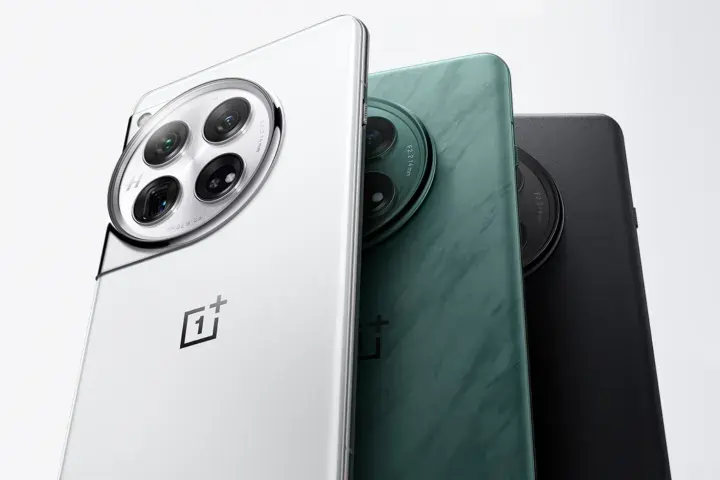
With the same circular camera bay and rounded corners on the glass back, the OnePlus 12 and OnePlus 11 have essentially the same design. A slightly more cushioned camera bump, likely to support a larger telephoto setup, and the alert slider’s new location on the left edge of the phone rather than the right are the only other minor alterations. You couldn’t distinguish between the two phones till you looked at them more carefully.
In order to make separation easier, OnePlus has also unveiled a new shade of green that resembles the Marble Odyssey edition of the OnePlus 11 and has a wavy texture beneath the glass. Apart from that, the black color from last year is still present, but a new white-silver hue joins the group. Which of these will be exclusive to China is unknown.
Additionally, the weight of the OnePlus 12 has increased slightly from 205 grams (7.23 ounces) to 220 grams (7.76 ounces) this year. In order to possibly fit a bigger battery, the phone also gets bulkier.
Analogously to the OnePlus 11, the OnePlus 12 compromises on complete ingress protection. The OnePlus 12 has an IP65 classification, which indicates that there is no waterproofing but that the apertures are shielded from fine dust (but not from coarse things like sand). The phone cannot be submerged in water; it can only withstand small splashes and rain, as shown by the grade of “5”. The rating is not comparable to other flagships, which have significantly better water resistance, even though it is an upgrade over the OnePlus 11.
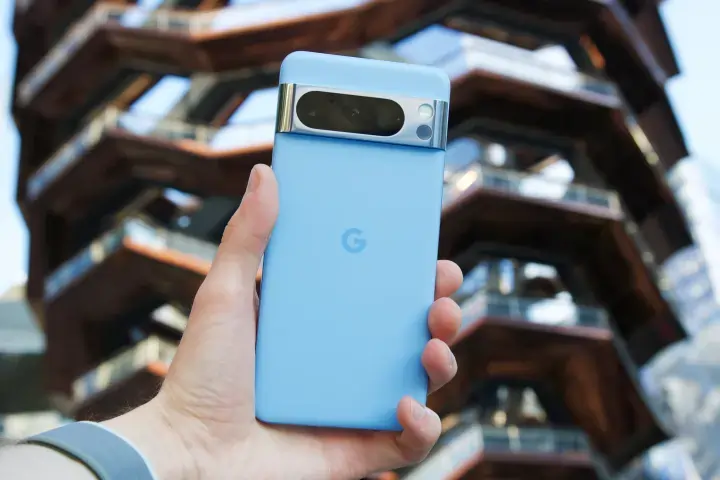
Though Gorilla Glass Victus 2 protects both the front and back of the Pixel 8 Pro, its construction is more robust. OnePlus 12 and Pixel 7 Pro have curved displays; this phone, on the other hand, keeps its pill-shaped camera on the back while switching to a flat display up front. Additionally, the Pixel 8 Pro has rounded sides compared to its predecessor. It is available in three colors, with matching undertones of stainless steel: “Bay” blue, “Obsidian” black, and “Porcelain” (off-white). The camera bump on the OnePlus 12 is made entirely of glass, but because stainless steel runs along it, it is marginally more durable against unintentional drops.
In terms of dimensions and weight, the Pixel 8 Pro and the OnePlus 12 are almost identical. It can, however, submerge 1.5 meters (about 5 feet) in freshwater for up to 30 minutes because to its IP68 rating. As long as you don’t use the Pixel 8 Pro close to the ocean, you can record films underwater.
Thanks to its more robust construction, the Pixel 8 Pro feels more prepared to last you longer even though the OnePlus 12 has a more recognizable and eye-catching look. It is the category winner as a result.
Winner: Google Pixel 8 Pro
Pixel 8 Pro vs OnePlus 12: DISPLAY
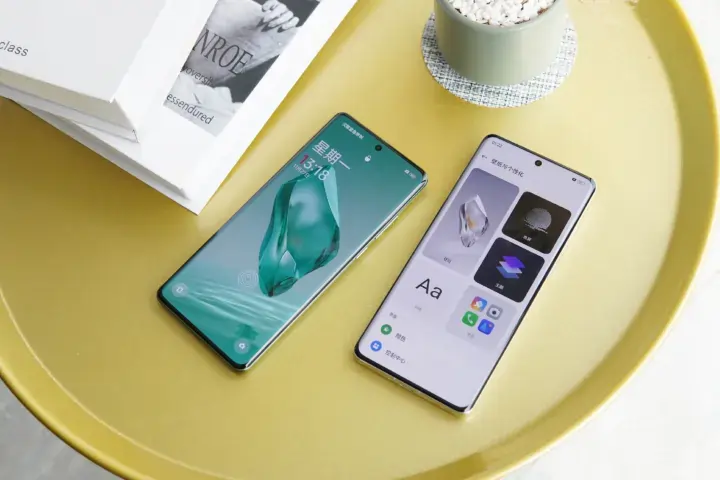
With an astounding resolution of 1440 x 3168 pixels, the 6.82-inch AMOLED display on the OnePlus 12 is impressive. Additionally, LTPO technology is supported by the screen, enabling it to operate at refresh rate intervals ranging from 1Hz to 120Hz. Similar to earlier OnePlus flagships, the display has curvature along its longer edges.
Editor’s Choice
The display is touted by OnePlus as having a peak brightness of 4,500 nits, among other impressive specs. It’s important to remember that, while viewing HDR video footage, peak brightness only represents the brightness of the brightest pixels. When in the High Brightness Mode, which is activated by strong direct light, sunlight, or manual brightness adjustment, OnePlus promises a brightness of 1,600 nits for everyday viewing. According to certain early leaks, the actual brightness of the OnePlus 12 matches the specifications.
To lessen eye strain, OnePlus also says it has included “medical grade” measures. This is accomplished by the use of a high pulse-width modulation (PWM) frequency of 2,160Hz. Brands like Honor are increasingly adopting this technology, which shows how high PWM can be the key to less eye strain, particularly while using a phone in low light. But until OnePlus receives certification from the Food and Drug Administration (FDA) or a similar body, we would treat the company’s “medical grade” claim with suspicion.
Additionally, OnePlus says that its “Rain Water Touch” technology enables you to interact with the screen even when your hands are wet.
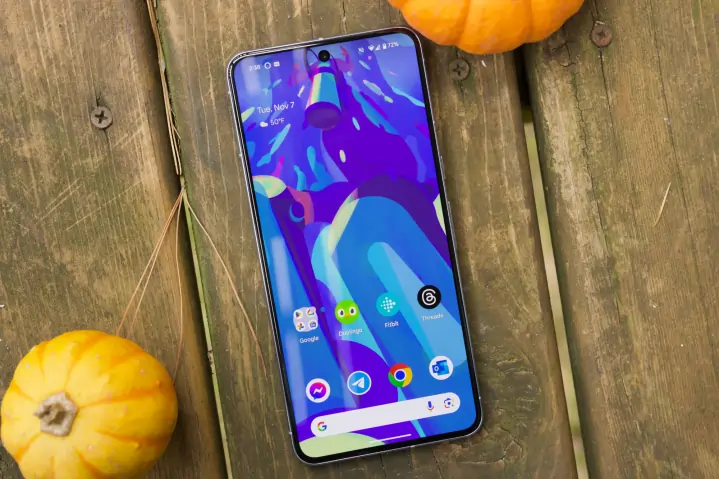
On the other hand, the Pixel 8 Pro has a 6.7-inch display that is marginally smaller. Given the comparable dimensions of the two phones, larger display bezels correspond to smaller displays. The Pixel 8 Pro has a flat display, as previously established, while the OnePlus 12 has a curved display; which one you choose depends on your personal preferences.
Similar to OnePlus, Google asserts that its screens have a high brightness despite having a somewhat lesser resolution of 1344 x 2992. Under the High Brightness Mode (HBM), the typical value is 1,600 nits, with a peak brightness of 2,400 nits. It’s a very pleasant and bright display that looks great indoors and out.
Notably, the Pixel 8 Pro can only use HDR10+, a comparable but less common HDR format, and does not support Dolby Vision. This essentially implies that a large portion of your Netflix video meant for Dolby Vision screens will instead default to the less-than-optimal open-source HDR10 codec (rather than HDR10+), which will result in scenes that are darker than those on the OnePlus 12. The viewing experience will be comparable, if not the same, on apps like Apple TV and Amazon Prime Video, which support HDR10+ in addition to Dolby Vision.
And last, the AMOLED display on the Pixel 8 Pro has LTPO technology as well. Slightly less enticing is the Pixel’s lack of active controls to force 120Hz across all apps or swap between multiple supported refresh rate rates.
Winner: OnePlus 12
Pixel 8 Pro vs OnePlus 12: PERFORMANCE
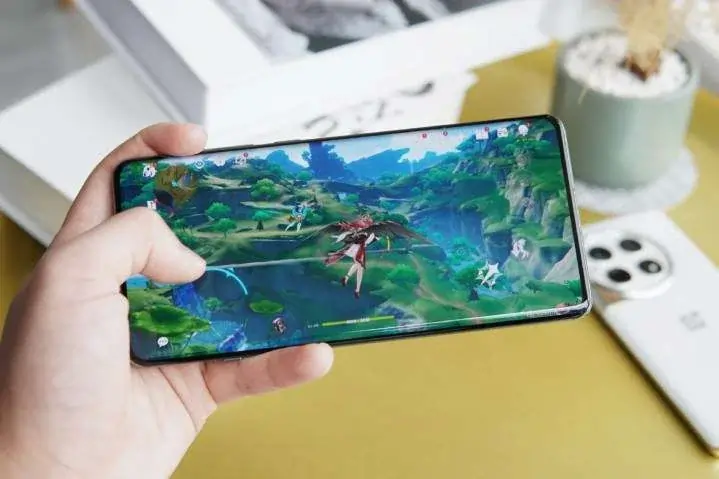
One of the first smartphones to use Qualcomm’s most recent Snapdragon 8 Gen 3 chipset is the OnePlus 12, albeit none of these devices have been released outside of highly competitive regions like China and India. It’s possible that the OnePlus 12 will be the first phone in the US to use the chipset. But there’s an equal chance Samsung might beat it by revealing the Samsung Galaxy S24 series first, going by the schedule from earlier in 2023.
This year’s early release of the Snapdragon 8 Gen 3 offers significant improvements over the Gen 2. One prime core, four performance cores (instead of the 2+2 layout in earlier generations), and two efficiency cores are among the modified CPU configurations. Qualcomm promises 25% improved GPU performance and a 30% better CPU.
The new chipset’s AI-related capabilities are what really set it apart, as it has substantially faster processing using generative AI models and improved neural processing by 98%. Not only will the generative AI applications handle text and graphics, but they will also speak. Qualcomm used the Llama 2 model from Meta to illustrate this at the Snapdragon Summit, enabling real-time conversations with an AI chatbot. The most significant change is that all processing will now take place locally on the device, as opposed to being offloaded to an internet data center, which was previously limited to devices bearing Google’s Tensor brand of chips. Additional AI capabilities enable phones with the Snapdragon 8 Gen 3 to employ generative fill, which is similar to Adobe Photoshop and generates portions of the image depending on text input.
Which of these features will genuinely appear on upcoming Snapdragon 8 Gen 3 phones, like the OnePlus 12, is unknown. Making wallpapers is a further possible application. Smartphone manufacturers, like OnePlus, will need to include these functionalities into the software even though the hardware is ready.
By including up to 24GB of RAM and 1TB of UFS 4.0 storage, OnePlus makes a huge advancement. These characteristics guarantee the durability of the device and make up for the lack of astounding updates in other areas. It’s hard to predict if these will only be available in China or if they will spread to other markets.
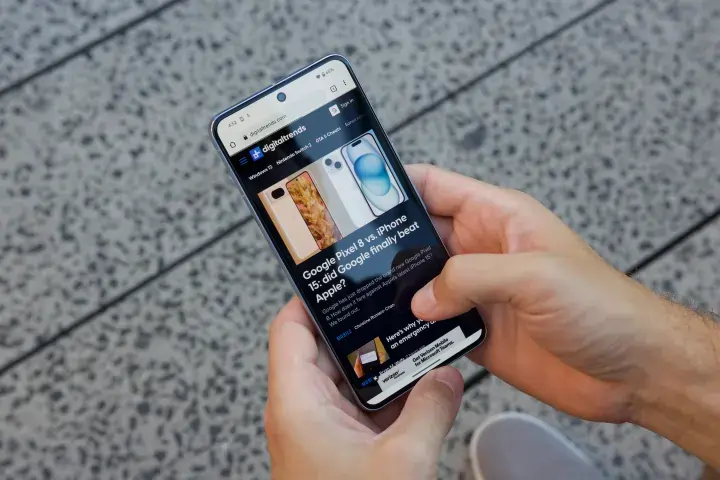
Conversely, the Google Tensor G3 chipset, which was developed in collaboration with Samsung, powers the Pixel 8 Pro. The chip’s CPU and GPU are similar to those of Qualcomm’s flagship Snapdragon 8 Gen 2 chipset from the previous year. Our earlier 2023 synthetic benchmark testing show that the OnePlus 11 with the Snapdragon 8 Gen 2 outperforms the Pixel 8 with the Tensor G3. It is therefore unrealistic to anticipate a higher performance than the more recent Snapdragon 8 Gen 3. All versions of the slower UFS 3.1 storage, from 128GB to 1TB, come with 12GB of RAM as standard from Google.
Google has the advantage when it comes to AI features on the Pixel devices because of its more sophisticated AI research. The Pixel 8 Pro’s enhanced Tensor Processing Unit dedicated AI chip allows for much more sophisticated camera functions like Magic Editor and Best Take. While the enhanced TPU enables Face ID-level security with Face Unlock on the Pixel 8 Pro even without the specific sensors that the iPhone needs, Google’s interactive chatbot Bard now powers conversations with Google Assistant.
Additionally, Google just began updating its apps to run on Gemini, an abridged version of its most potent machine learning model that is comparable to OpenAI GPT-4. With more apps to be added soon, this streamlined version, dubbed “Gemini Nano,” is currently in charge of Gboard ideas, automatic transcription in the Recorder app, and Smart Replies. While these AI apps will operate directly off the processor in Pixel 8 Pro and future Pixel smartphones, Gemini Nano is a feature of Android 14.
Even though it performs a little slower than the Pixel 8 Pro, its specially made chipset (rather than the generic Snapdragon) gives it a distinct advantage in AI applications. Due to Google’s direct ownership over Android, it is able to influence trends in its favor and compel other manufacturers like OnePlus to follow suit.
Both phones are anticipated to operate hotly given their respective performance levels. There’s a horrible reputation for the Tensor lineup to overheat. Even while the Pixel 8 Pro outperforms earlier models, there are still some problems with it. The thermal efficiency of the Snapdragon 8 Gen 3 has not yet undergone comprehensive testing.
Winner: Tie
Pixel 8 Pro vs OnePlus 12: BATTERY & CHARGING
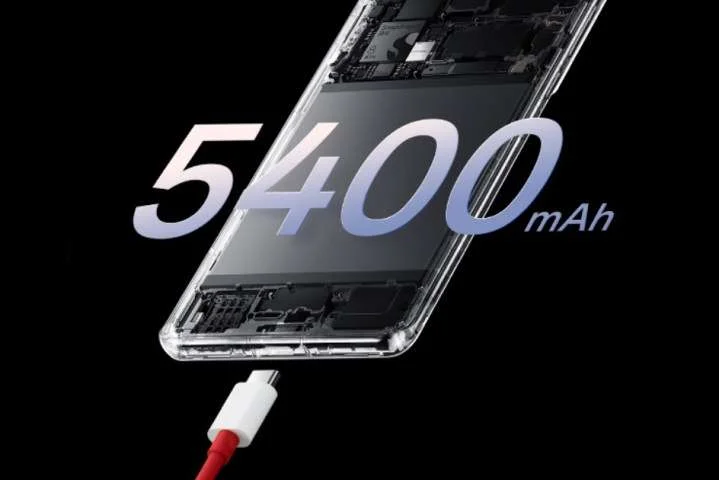
Fast charging was standardized and made popular by OnePlus early on, and the OnePlus 12 is no different. The phone has a sizable 5,400mAh battery that can support up to 100 watts of fast charging, meaning that it can be fully charged in less than 30 minutes. This battery is around 7.5% larger than the one found in the OnePlus 11. Similar to the OnePlus 11, we may witness that being restricted to 80W due to variations in power voltage in the United States.
A great addition to the OnePlus 12 is 50W wireless charging, which was not supported at all by the OnePlus 11. Fast wireless charging using OnePlus’ own technology will be necessary because this outperforms the Qi or Qi2 standards. For accessories like earphone covers, the phone now supports up to 10W reverse wireless charging.
The Pixel 8 Pro, in contrast, has a smaller 5,050mAh battery. Although the battery capacity of the Pixel 8 Pro is not trivial, it is not fast enough to enable both cable and wireless charging at up to 33W and 23W, respectively. The Pixel 8 Pro charges considerably more slowly as a result, taking more than an hour to reach 100% battery life.
Winner: OnePlus 12
Pixel 8 Pro vs OnePlus 12: CAMERAS
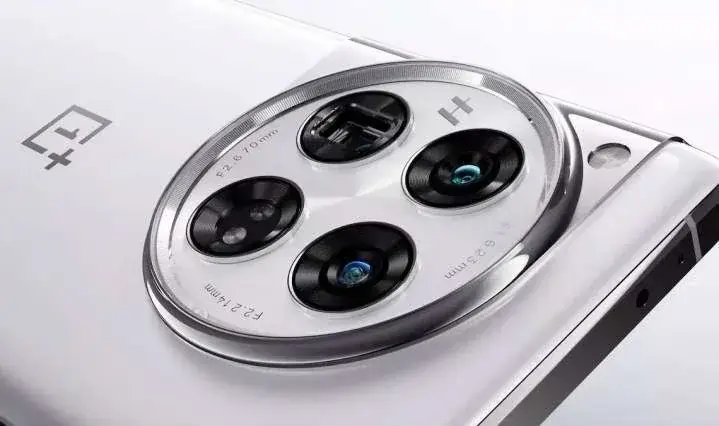
The OnePlus 12 and OnePlus 11 both have three rear cameras. The sensors have undergone a significant improvement over the prior generation, nevertheless. First, the Sony LYT-808 sensor, which replaces the old IMX family, is now used in the primary 48MP camera. The sensor’s features, which are also present in the OnePlus Open, include a novel design that improves light absorption while maintaining a smaller size. Better lowlight photography is so anticipated as a result of this.
The OnePlus Open’s other two rear cameras, a 48MP ultrawide and a 64MP telephoto sensor, are identical to these two. With a periscope configuration for the telephoto camera, this is the first OnePlus slab phone that enables brighter long-range photos. In addition to improved sensors, the cameras gain from Hasselblad’s color correction. Pictures from the OnePlus Open show us just how good the new Lytia sensor can be, and the Snapdragon 8 Gen 3’s enhanced image signal processor (ISP) should only get better. You could be disappointed, though, if you’re hoping for the same degree of detail as the Galaxy S23 Ultra or the iPhone 15 Pro.
The OnePlus 12 truly shines when it comes to Dolby Vision video recording. If you want to become an expert at the color output during the editing stage, you may also switch to LOG.
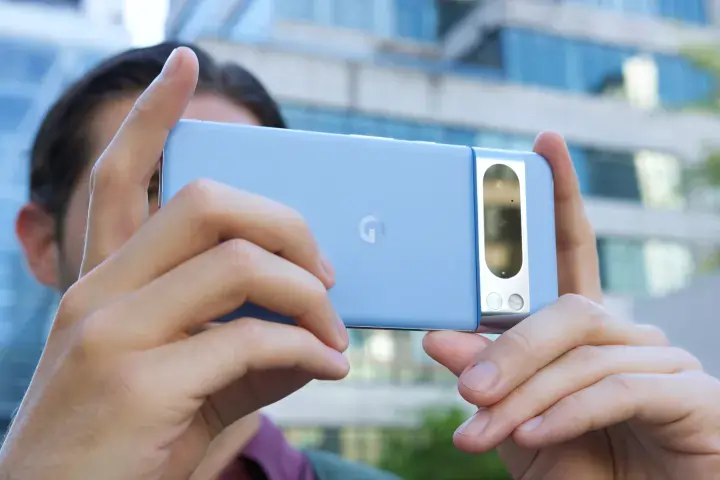
Meanwhile, the remarkable photographic capabilities of the Pixel series lend the device its name. Since then, things have much improved, even though Google seems to have forgotten about the poor cameras on the Pixel 5 (which used the same sensor as the first Pixel). Despite using the same 50MP sensor as the Pixel 6 Pro, the Pixel 8 Pro boasts one of the greatest cameras available thanks to general software updates and enhanced AI capabilities.
In a straight comparison, the Pixel 8 Pro outperforms the iPhone 15 Pro in terms of consistent quality photography. In addition to its remarkable 50MP primary camera, the camera excels at long-range photography because to its 5x telephoto lens and AI-powered upgrades for zoomed-in scenes. Best Take and other AI technologies enhance the camera experience even further.
The Pixel 8 Pro strives for crisper selfies with autofocus on the front camera, while the OnePlus 12 boasts a 32MP sensor. Due to these factors, we predict that the Pixel 8 Pro will prevail in this contest; nevertheless, after we receive the OnePlus 12, we will make sure to compare the two phones.
Winner: Google Pixel 8 Pro
Pixel 8 Pro vs OnePlus 12: SOFTWARE & UPDATES
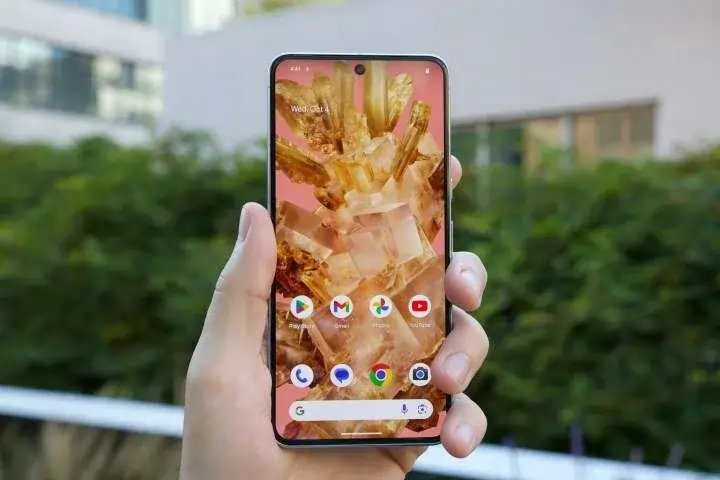
Since the two businesses joined back into one, the distinctions between Oppo’s ColorOS and OnePlus’ OxygenOS Android interface have become less noticeable. The OnePlus 12, among other OnePlus phones in China, are actually running ColorOS. The international model will, nevertheless, run OxygenOS, but with very minor interface modifications from Oppo.
We anticipate that OxygenOS 14, which is based on Android 14, will ship pre-installed on the OnePlus 12 as well as the OnePlus 11 and a few other smartphones. With its flagships, OnePlus typically provides four Android version upgrades; the OnePlus 12 is no exception.
Android 14 and a unique “Pixel experience” interface with extra capabilities over the stock, open-source version of Android were included with the Pixel 8 Pro when it released. Google has assured seven years of software upgrades for the Pixel 8 Pro, in addition to timely and monthly updates for all Pixel devices. This means that the phone will last far longer than the OnePlus 12 unless the hardware ages too quickly to support newer iterations of Android. Because of this, the Pixel prevails.
Winner: Google Pixel 8 Pro
Pixel 8 Pro vs OnePlus 12: SPECIAL FEATURES
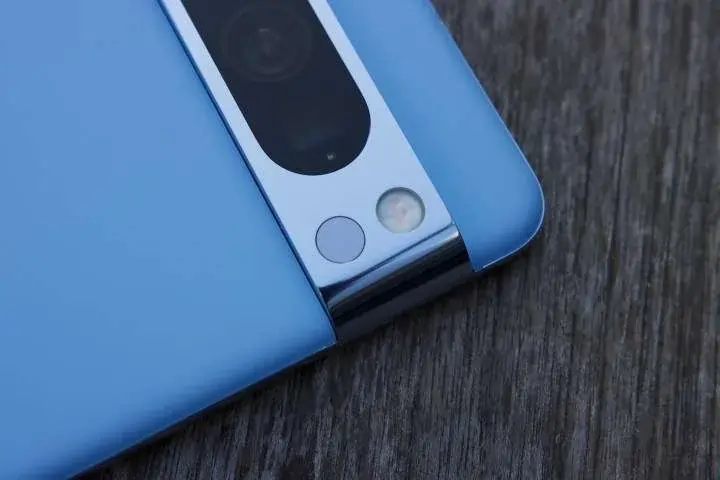
The Pixel 8 Pro was created with the AI era in mind, as was previously mentioned. It gains from Google’s expertise in the field and from the fact that it can customize the Android interface more effectively than any other producer of Android phones. With its “AICore” packages, Google is also opening up the AI capabilities of more recent chipsets to third-party developers, and the Pixel will surely continue to be the first to benefit from these developments.
Superior face unlocking on the Pixel 8 Pro is made possible by AI capabilities driven by a dedicated Tensor Processing Unit, which is comparable to the iPhone’s 3D Face ID sensors. A temperature sensor integrated into the camera module of the Pixel 8 Pro is another feature. Even though Google does not support any particular use case, you can enjoy having this sensor available to you.
In the meanwhile, it’s thrilling to learn about the OnePlus 12’s astounding brightness claims. As the Pixel 8 Pro does not support Dolby Vision, the OnePlus 12 is said to have a brightness of up to 4,500 nits, which could provide an amazing visual experience. We would prefer to test the phone before making any firm statements, though, as it is important to keep in mind that specifications do not always equate to real-world greatness. The Pixel 8 Pro’s display, meanwhile, has already shown to be incredibly bright.
In addition, Google guarantees upgrades for the Android version for seven years, which is longer than any other Android phone available today.
Winner: Google Pixel 8 Pro
Pixel 8 Pro vs OnePlus 12: VERDICT
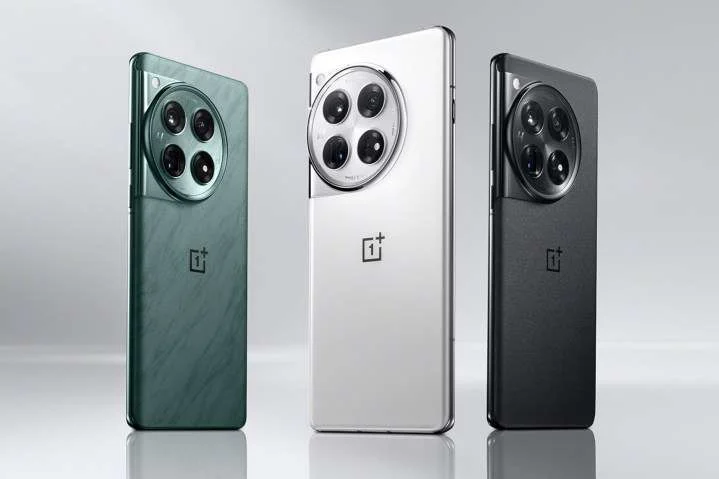
Strong features that outweigh each other in particular areas distinguish both the OnePlus 12 and the Pixel 8 Pro. Outstanding hardware, lightning-fast charging, and mind-blowing performance characterize the OnePlus 12. Being “the best Pixel so far,” the Pixel 8 Pro benefits from Google’s extensive and varied experience with artificial intelligence as well as its capacity to leverage software to maximize hardware potential.
Your tastes will ultimately determine which of the two you choose. The OnePlus 12 is a better option if you want a stylish phone that offers more capabilities above pure Android, unexpectedly quick charging, and solid performance. The Pixel 8 Pro is well worth the investment if you want a better camera and intend to keep the same phone for a number of years.
When the OnePlus 12 is anticipated to be on sale globally in early 2024, we aim to allay some of your concerns in the meanwhile.
- Pixel 8 Pro is the all-pro phone engineered by Google; it’s super fast, powerful, and secure,...
- Unlocked Android 5G phone gives you the flexibility to change carriers and choose your own data...
- With the most refined design yet, Pixel 8 Pro has an immersive, 6.7-inch Super Actua display...
- Comes with 6 months of Google One and 3 months of Youtube Premium with purchase of OnePlus 12....
- Pure Performance: The OnePlus 12 is powered by the latest Snapdragon 8 Gen 3, with up to 16GB...
- Brilliant Display: The OnePlus 12 has a stunning 2k 120Hz Super Fluid Display, with advanced...
Last update on 2025-05-16 / Affiliate links / Images from Amazon.
Why Trust Factic
Berry Alex has been evaluating, testing, and reviewing tech, Household and travel items for several decades. He compiled all of the testers’ input, conducted extra research to assess each phone mount’s essential features and overall functioning, and reviewed professional profiles and verified customer reviews for each product.



